Dark by no means – the dishes of the privileged classes in the Middle Ages were tasty and often brimming with valuable ingredients such as saffron or pepper. The oldest German-language cookbook was written by Würzburg historian and jurist Michael de Leone. He was a chronicler of the history of the city of Würzburg, recorded song texts of the minnesingers and also cooking recipes of his time. Perhaps his studies in Bologna sensitized him to the subject of food. For Italy was the first high cuisine in Europe and already during the lifetime of Michael de Leone from Würzburg the driving force of European culinary art. In any case, it is his writing, which is over 670 years old, that is considered the oldest German-language cookbook. His house book from 1350 also includes the book of good food with about 50 recipes.
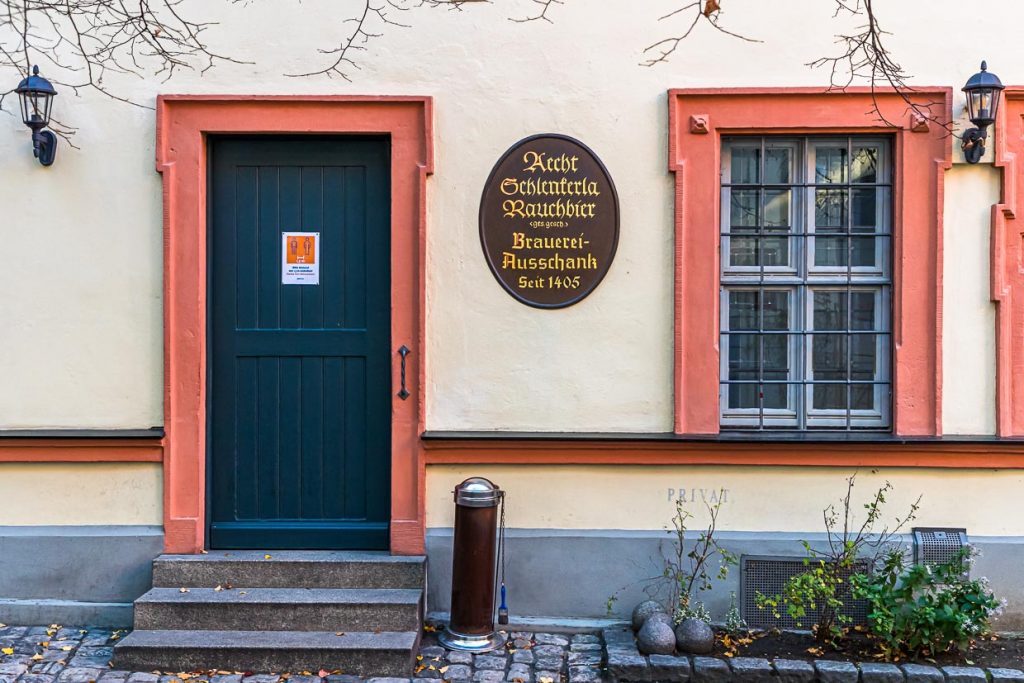
The oldest German-language cookbook
Nowadays, you don’t have to be a clergyman or scion of a noble family to sample a selection of medieval dishes. A secular visit to the Schlenkerla smoked beer brewery in Bamberg is enough. In the house on the Dominikanerstraße 6 there is beside the historical premises since short the possibility to dine after Middle Ages custom. Let’s make it clear right away that this does not mean eating with your hands and throwing chicken bones over your shoulder. In the kitchen of the Schlenkerla, the medieval meal is prepared with culinary flair and historical expertise.
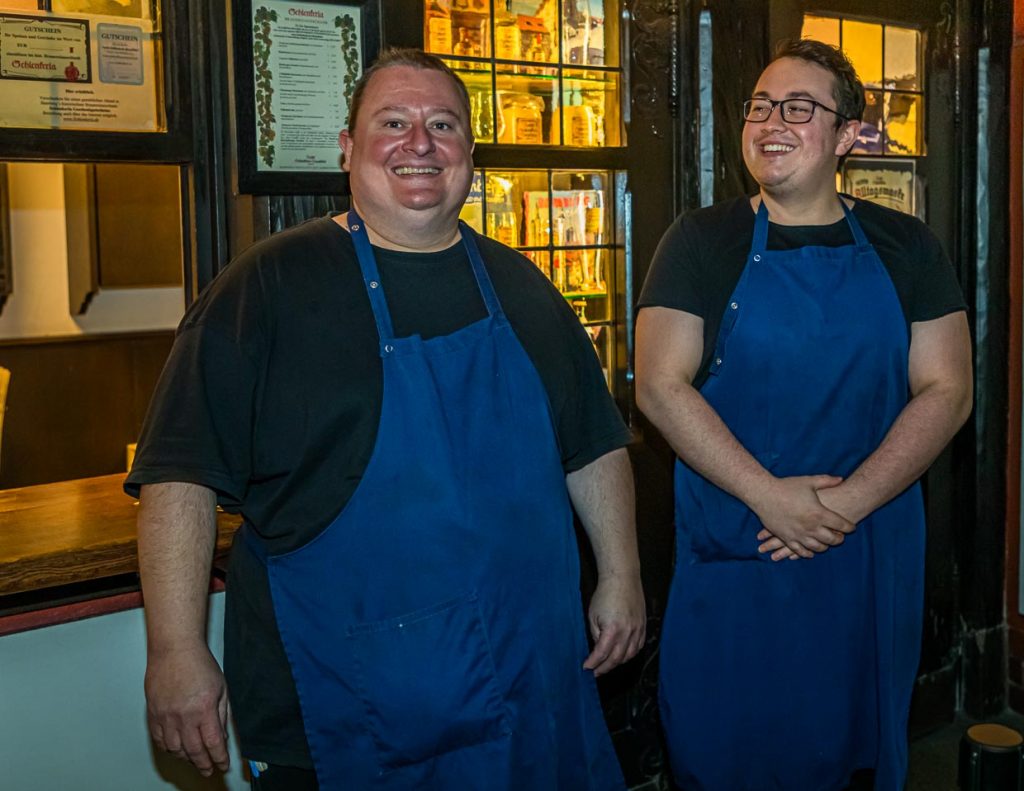
Table manners and customs – Franconian finger food
To get an insight into the dining and inn culture of Franconia in the 14th century, there is probably no more authentic place than the Schlenkerla inn in Bamberg. Wolfgang Theil and Simon Klein are the two minds behind the new concept. Theil has been the restaurant’s head chef for many years, and Klein brings a master’s degree in historic preservation and a history degree to the table in addition to his passion for cooking. At a convivial meal in the Middle Ages, Simon Klein explains, food was served up in small bowls or packaged as pies. Everyone took what they had an appetite for. There were bread patties on which the food was placed. The cutlery consisted of a spoon and a knife.
Freedom of interpretation: “Make a crumbly dough”.
The Book of Good Food, from which Theil and Klein have compiled a menu, is admittedly a German-language work. Nevertheless, a translation, or rather interpretation, is necessary. What is the meaning of the instructions for action, which are noted in the book without any indication of quantity or time? Which flour is closest to the varieties of the time? What heat of a 14th century fireplace? Some dishes don’t really seem appealing even with great culinary curiosity, such as when there is talk of chicken simmered in almond milk pudding.
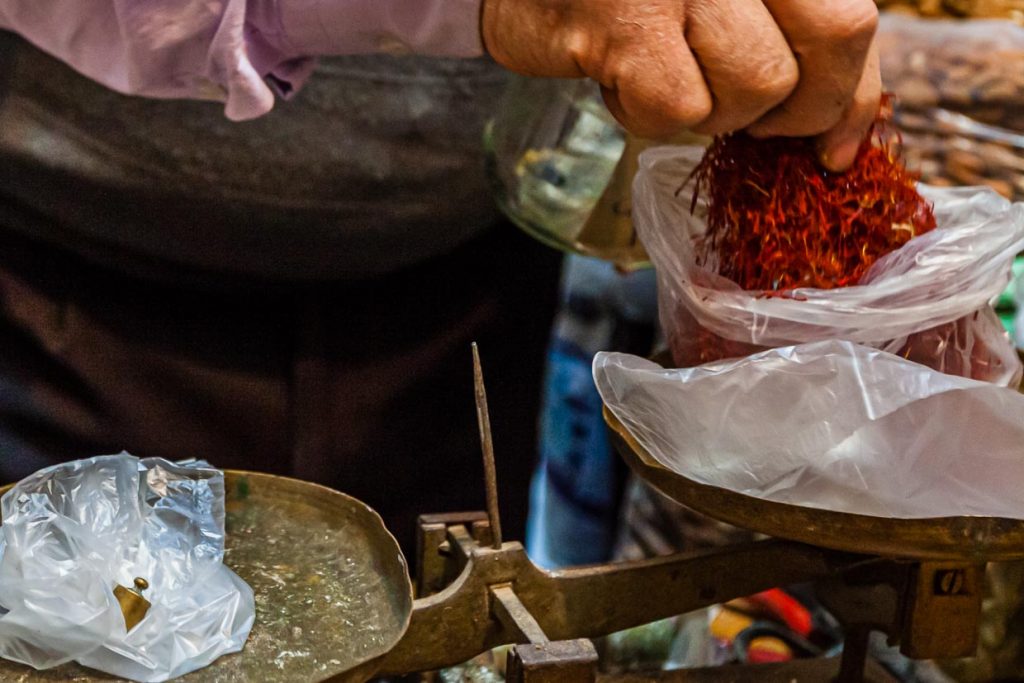
Spices such as anise, cinnamon and ginger were used in the kitchens of the clergy and nobility. The spice trade ran along the Silk Road. The price of saffron has remained relatively stable over the centuries, explains Simon Klein. To this day, saffron is the most expensive spice in the world. In the 14th century, a master carpenter, as Klein describes it, received 22 heller for his work of around 10 hours. Even then, one had to pay 25 heller for five grams of saffron. Today, saffron is often sold in quantities of one gram and then costs around 10 euros, depending on the quality.
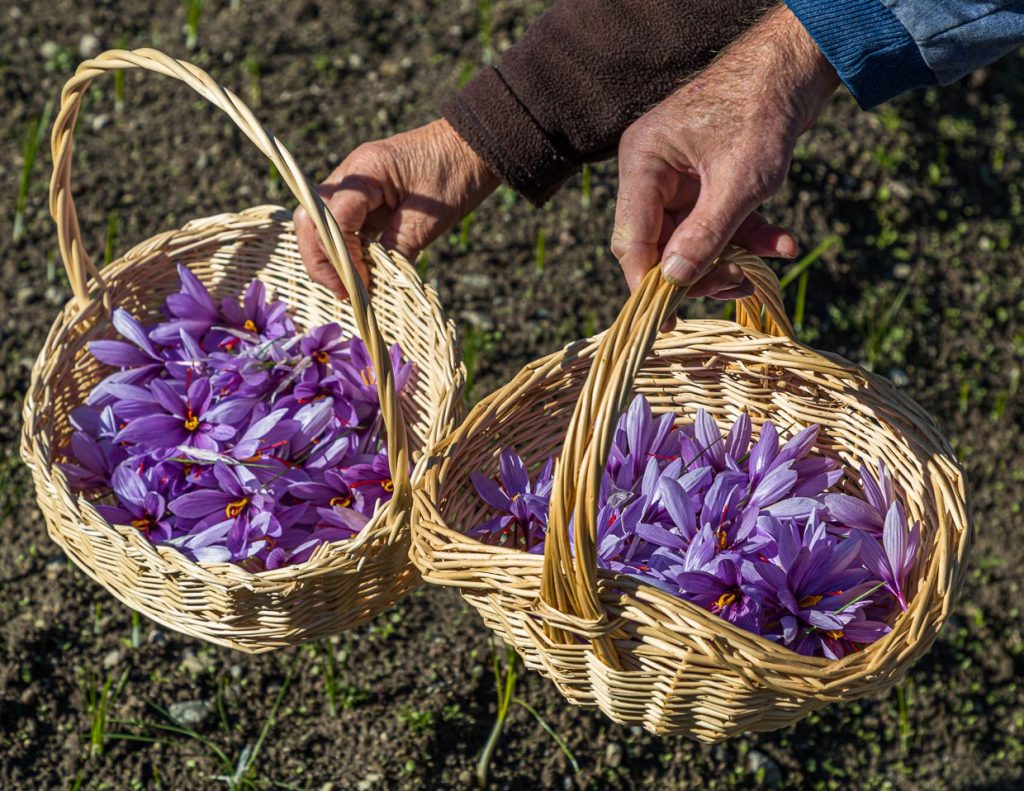
The price of pepper was slightly lower than that of saffron, but stable enough to be weighed in gold. And the saying rich pepper sack has survived to this day. It’s hard to believe, but pepper was used in the kitchen to show off. Those who let their chef use a particularly large amount could literally impress upon their guests how rich they were.
From almond sugo to saffron sauce
Cooks in the Middle Ages made use of a wide range of ingredients and spices. Spices such as ginger, anise, pepper, saffron and allspice or cloves were used in various historical recipes and testify to a sensitivity for flavors. The many vegetarian dishes that provided a varied diet even during Lent, forty days before Easter, are striking. Almond milk was used as a milk substitute during Lent. The recipes are written down without exact quantities and preparation times. Thus, the dishes from the kitchen of the Schlenkerla are culinary reconstructions. Wolfgang Theil and Simon Klein also plan to offer historical Lenten dishes for upcoming Lenten seasons. The appropriate rich Lenten beer has been brewed at Schlenkerla since time immemorial and is thus a historically documented food companion.
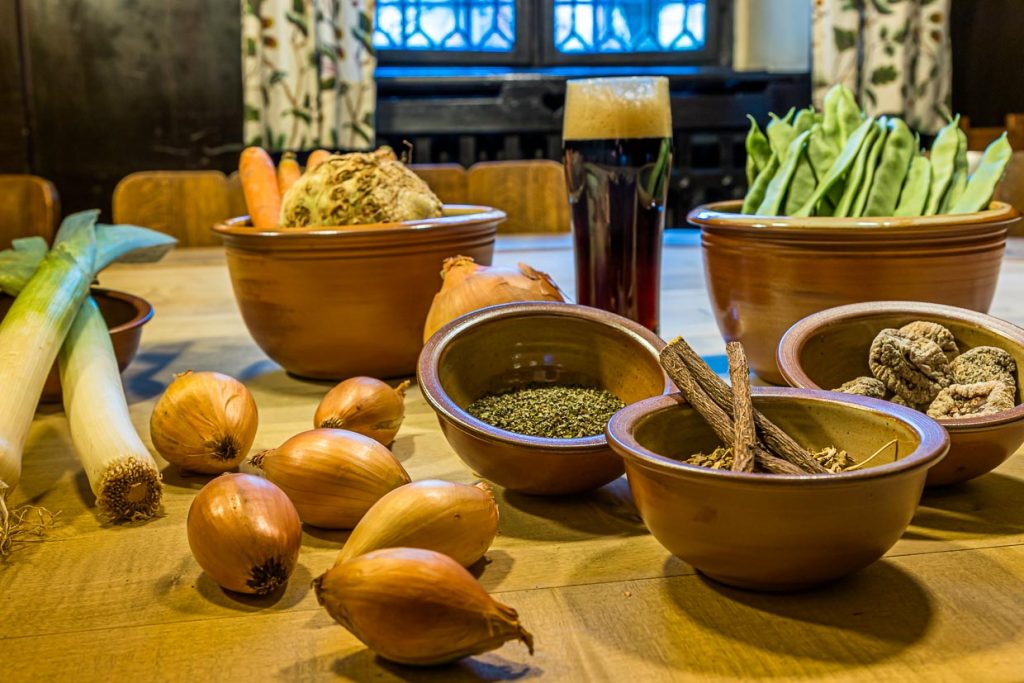
A spise of bonen – bean soup with saffron and smoked beer
Until the interpretation of a bean soup from the Middle Ages makes it onto the menu at Schlenkerla, several variations are tried out, Wolfgang Theil describes. It’s a job that oscillates between recipe research and recipe development. For the basis of the soup, a vegetable broth is prepared from leeks, onions and carrots and then strained through a sieve. The beans are cleaned and trimmed, then blanched briefly. The beans are then added to the vegetable soup and everything is brought to the boil briefly.
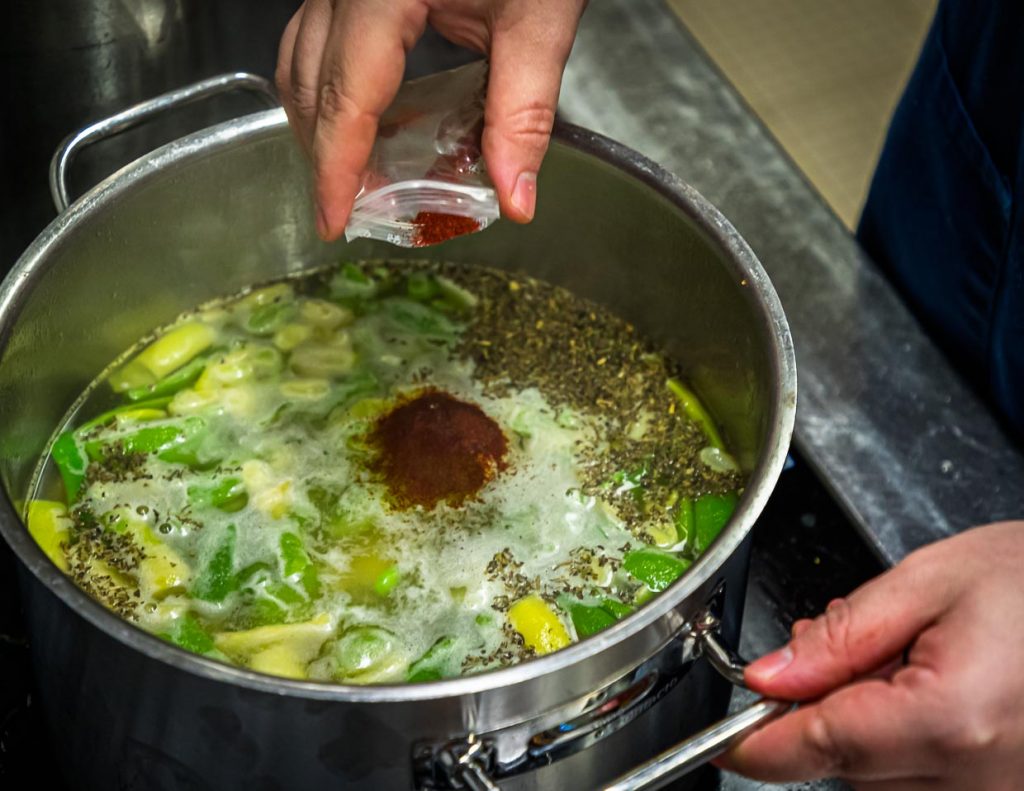
Now it is only a few steps to the typical taste of medieval cuisine in wealthy homes. For the ingredients of the medieval spice freaks follow. First savory, then finely ground saffron, which immediately releases its unmistakable red color and aroma.
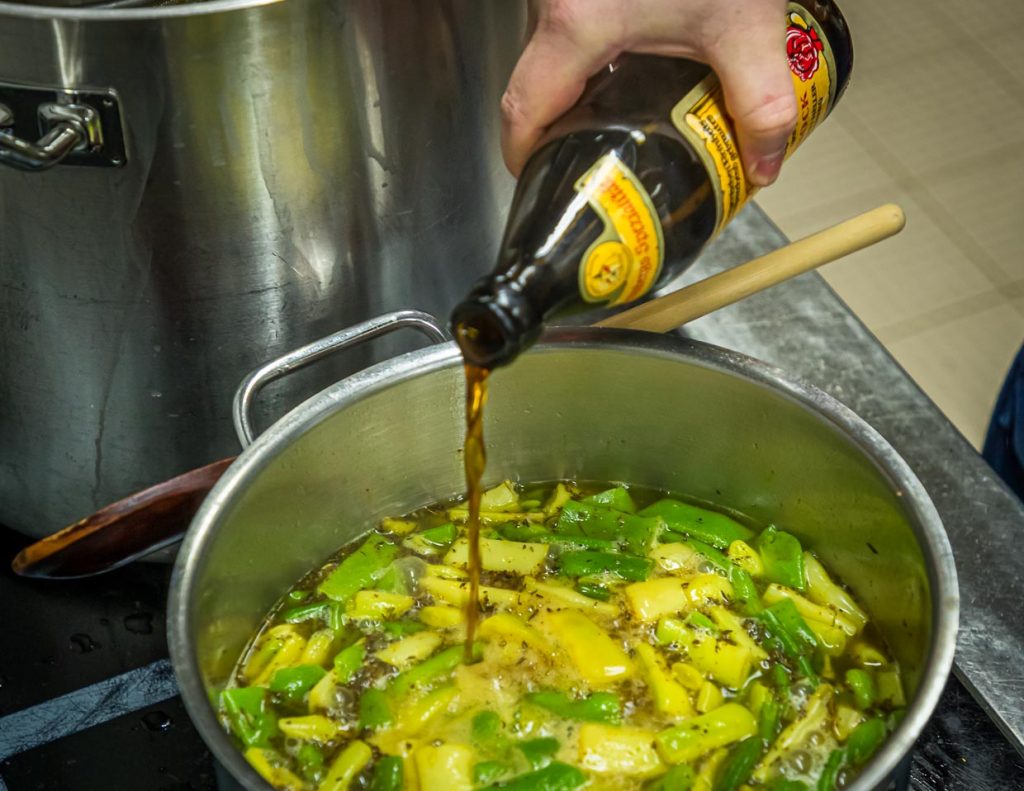
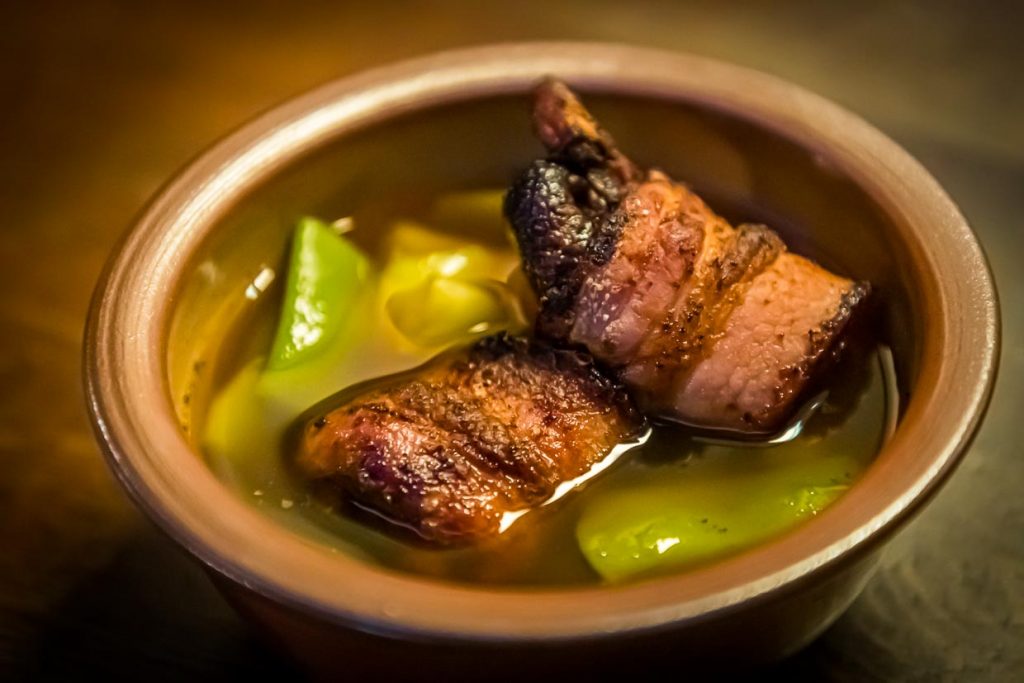
A spicy patty with tunken
Tunken, this old German word has survived as a verb in our language. As a noun, it is threatened with extinction and has been largely displaced by the English dip. In the Middle Ages, people still dipped copiously in tunks. Wolfgang Theil and Simon Klein offer their guests three kinds of tunks in the second course. There is the gingerbread dip, the grape and bacon dip, and an in-house dip in which Franconian marjoram, Bamberg onion, and the famous Bamberg licorice are added.
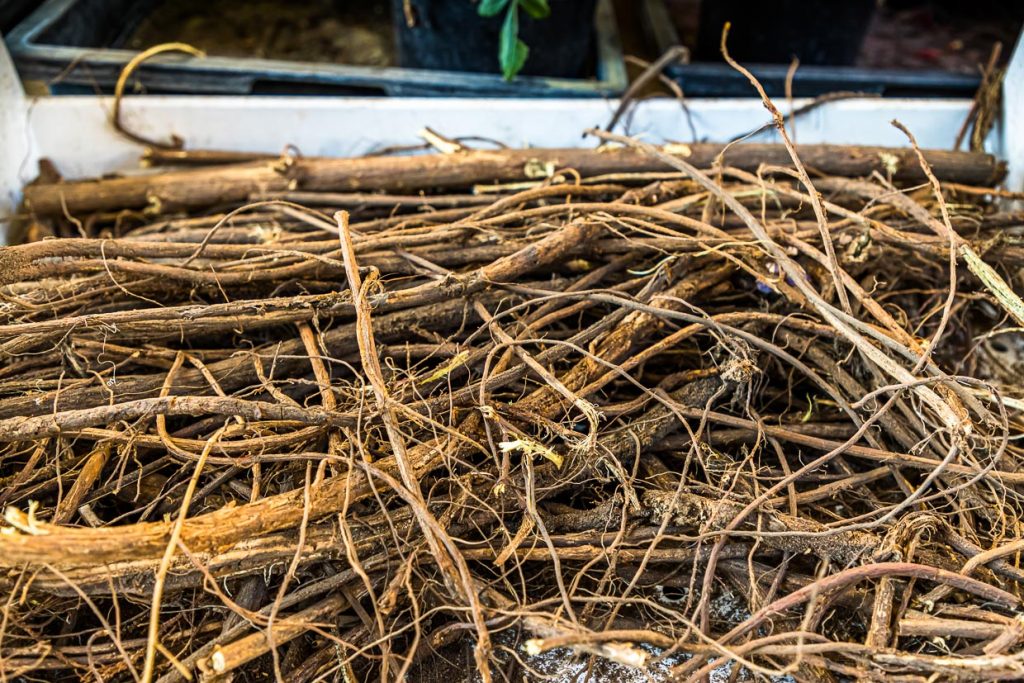
Licorice cultivation is a Bamberg tradition. Liquorice is a rather shaggy plant. The three- to four-year-old lateral roots have flavor and are harvested. The taproot, on the other hand, always remains standing. In 1604, licorice was even included in the coat of arms of the city of Bamberg. Today, dedicated family businesses in Bamberg’s horticultural town ensure that the old Bamberg house varieties such as onion, garlic, licorice and ginger continue to be cultivated.
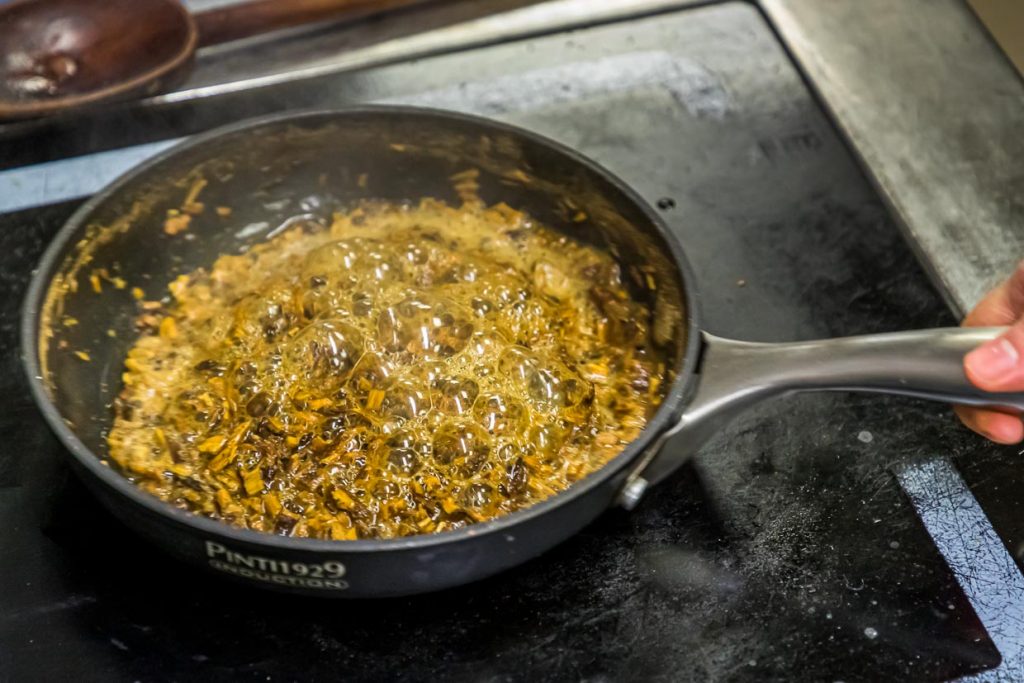
For the Schlenkerla dunk, a handful of grated licorice is placed in a pan and boiled with a little water. The decoction is passed through a sieve and set aside. In another pan, finely grated onions are added and simmered with some of the licorice decoction and Franconian marjoram.
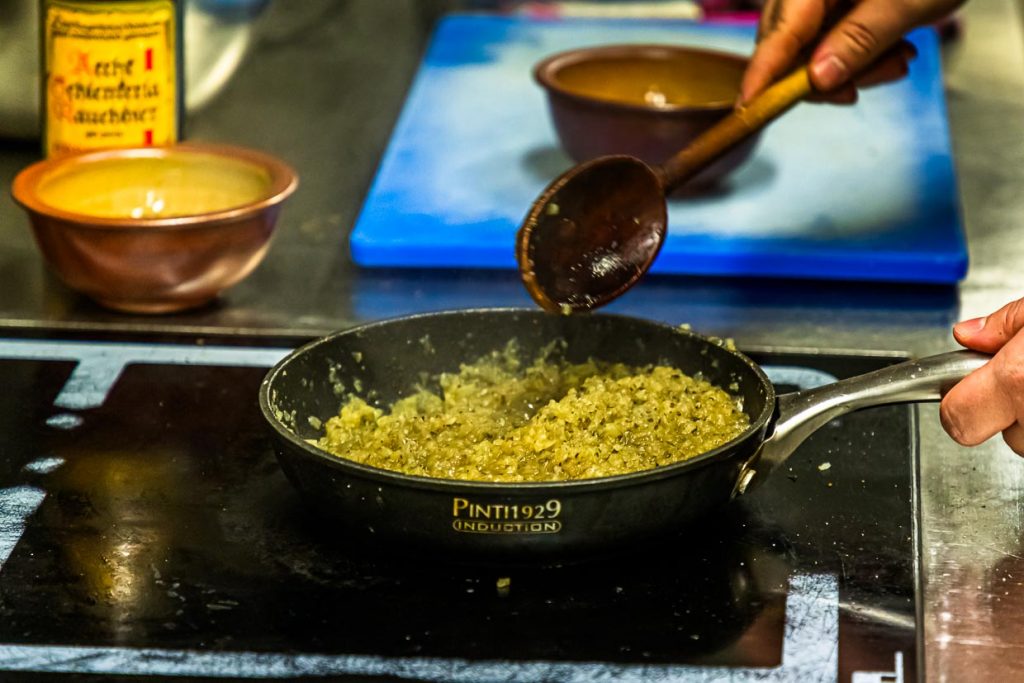
The history of culinary arts has always been about the distinction of the higher classes from the common people. Spices were an expression of wealth and thus power. Today, historical cookbooks serve many chefs around the world as a creative resource and enrichment for the regional orientation of a restaurant. It is to be hoped that the kitchen team of the Schlenkerla Rauchbierbrauerei will soon be able to once again serve up merry feasts in the style of the Middle Ages.
The Eighth Medieval Menu can be booked at the Schlenkerla Smoke Brewery for groups of 15 or more. It is highly recommended to book an expert lecture on culinary arts in the Middle Ages. The exciting knowledge about earlier table manners and eating habits is interspersed so to speak portion-wise into the four-course menu.
Wall calendar with photos by Georg Berg available in bookstores (also online) in various sizes: World Heritage Garden City Bamberg / also as family planner (*)
The research trip was partly supported on site by Bamberg Tourismus
(*) This post contains advertising links (also called affiliate or commission links) that lead to Amazon.de.

